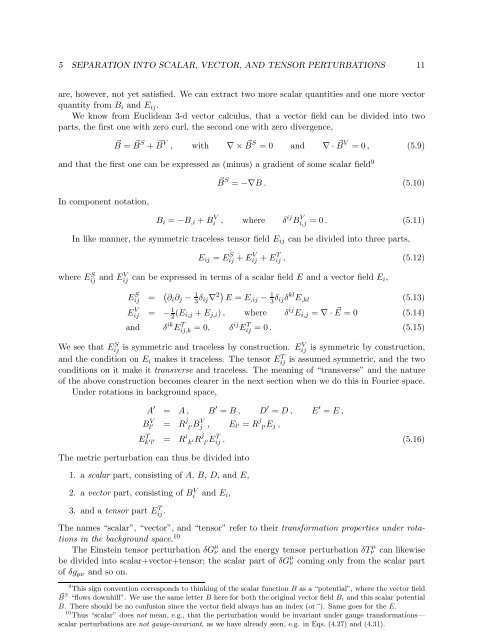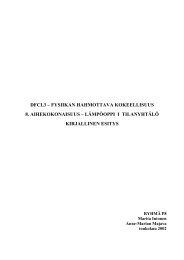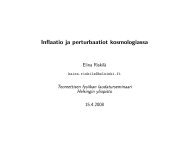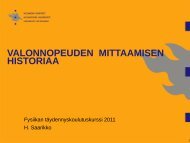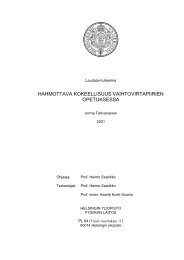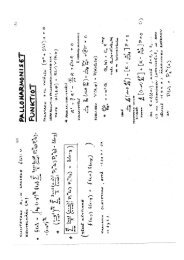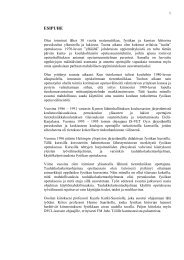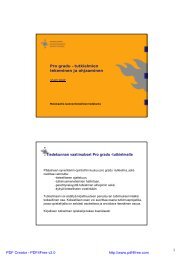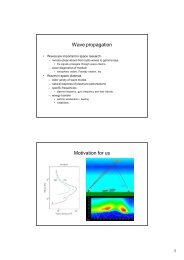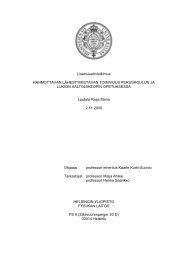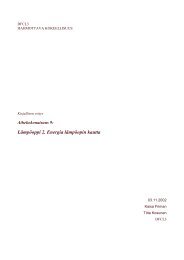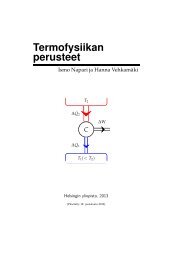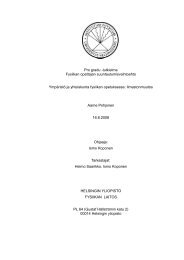Cosmological Perturbation Theory, 26.4.2011 version
Cosmological Perturbation Theory, 26.4.2011 version
Cosmological Perturbation Theory, 26.4.2011 version
Create successful ePaper yourself
Turn your PDF publications into a flip-book with our unique Google optimized e-Paper software.
5 SEPARATION INTO SCALAR, VECTOR, AND TENSOR PERTURBATIONS 11are, however, not yet satisfied. We can extract two more scalar quantities and one more vectorquantity from B i and E ij .We know from Euclidean 3-d vector calculus, that a vector field can be divided into twoparts, the first one with zero curl, the second one with zero divergence,⃗B = ⃗ B S + ⃗ B V , with ∇ × ⃗ B S = 0 and ∇ · ⃗B V = 0, (5.9)and that the first one can be expressed as (minus) a gradient of some scalar field 9In component notation,⃗B S = −∇B . (5.10)B i = −B ,i + B V i , where δ ij B V i,j= 0. (5.11)In like manner, the symmetric traceless tensor field E ij can be divided into three parts,E ij = E S ij + E V ij + E T ij , (5.12)where E S ij and EV ij can be expressed in terms of a scalar field E and a vector field E i,E S ij = ( ∂ i ∂ j − 1 3 δ ij∇ 2) E = E ,ij − 1 3 δ ijδ kl E ,kl (5.13)E V ij = − 1 2 (E i,j + E j,i ), where δ ij E i,j = ∇ · ⃗E = 0 (5.14)and δ ik E T ij,k = 0, δij E T ij = 0. (5.15)We see that Eij S is symmetric and traceless by construction. EV ij is symmetric by construction,and the condition on E i makes it traceless. The tensor Eij T is assumed symmetric, and the twoconditions on it make it transverse and traceless. The meaning of “transverse” and the natureof the above construction becomes clearer in the next section when we do this in Fourier space.Under rotations in background space,A ′ = A, B ′ = B , D ′ = D , E ′ = E ,B V l ′ = Rj l ′ B V j , E l ′ = R j l ′ E j ,E T k ′ l ′ = Ri k ′Rj l ′ E T ij . (5.16)The metric perturbation can thus be divided into1. a scalar part, consisting of A, B, D, and E,2. a vector part, consisting of B V i and E i ,3. and a tensor part E T ij .The names “scalar”, “vector”, and “tensor” refer to their transformation properties under rotationsin the background space. 10The Einstein tensor perturbation δG µ ν and the energy tensor perturbation δT µ ν can likewisebe divided into scalar+vector+tensor; the scalar part of δG µ ν coming only from the scalar partof δg µν and so on.9 This sign convention corresponds to thinking of the scalar function B as a “potential”, where the vector field⃗B S “flows downhill”. We use the same letter B here for both the original vector field B i and this scalar potentialB. There should be no confusion since the vector field always has an index (or⃗). Same goes for the E.10 Thus “scalar” does not mean, e.g., that the perturbation would be invariant under gauge transformations—scalar perturbations are not gauge-invariant, as we have already seen, e.g. in Eqs. (4.27) and (4.31).


